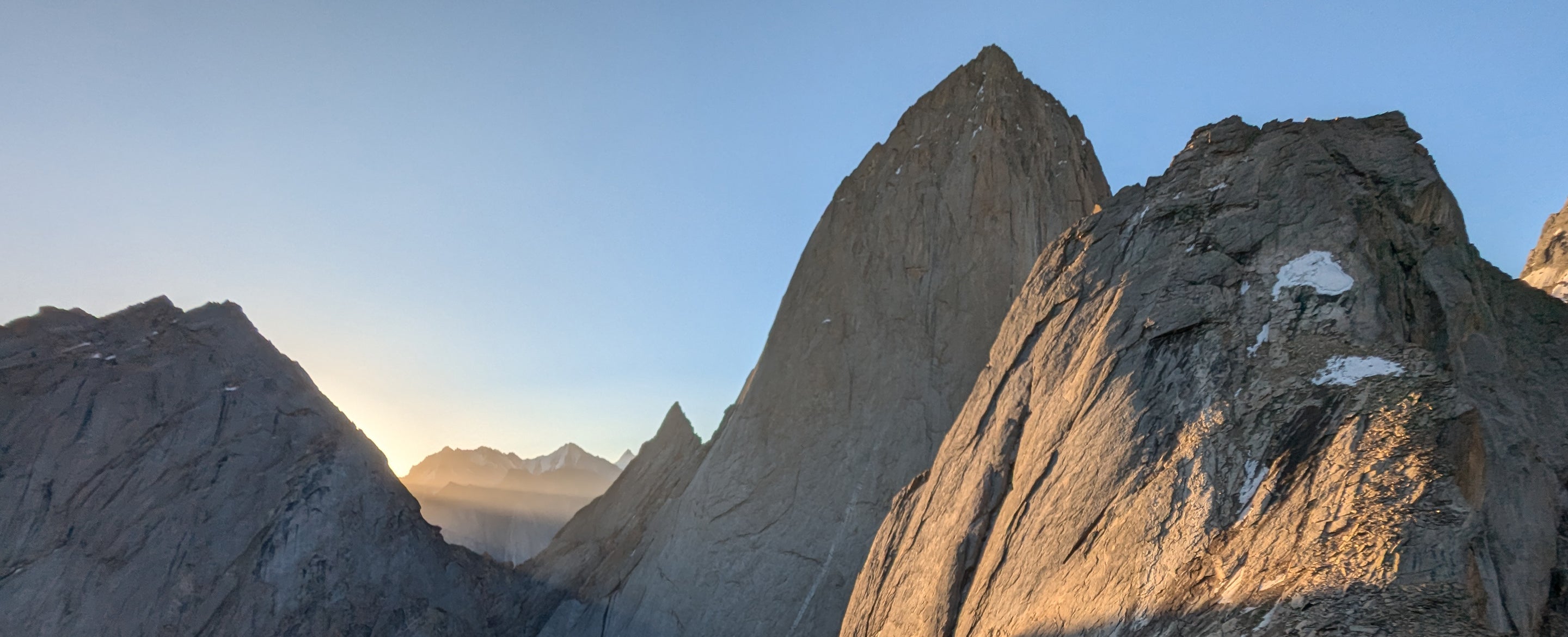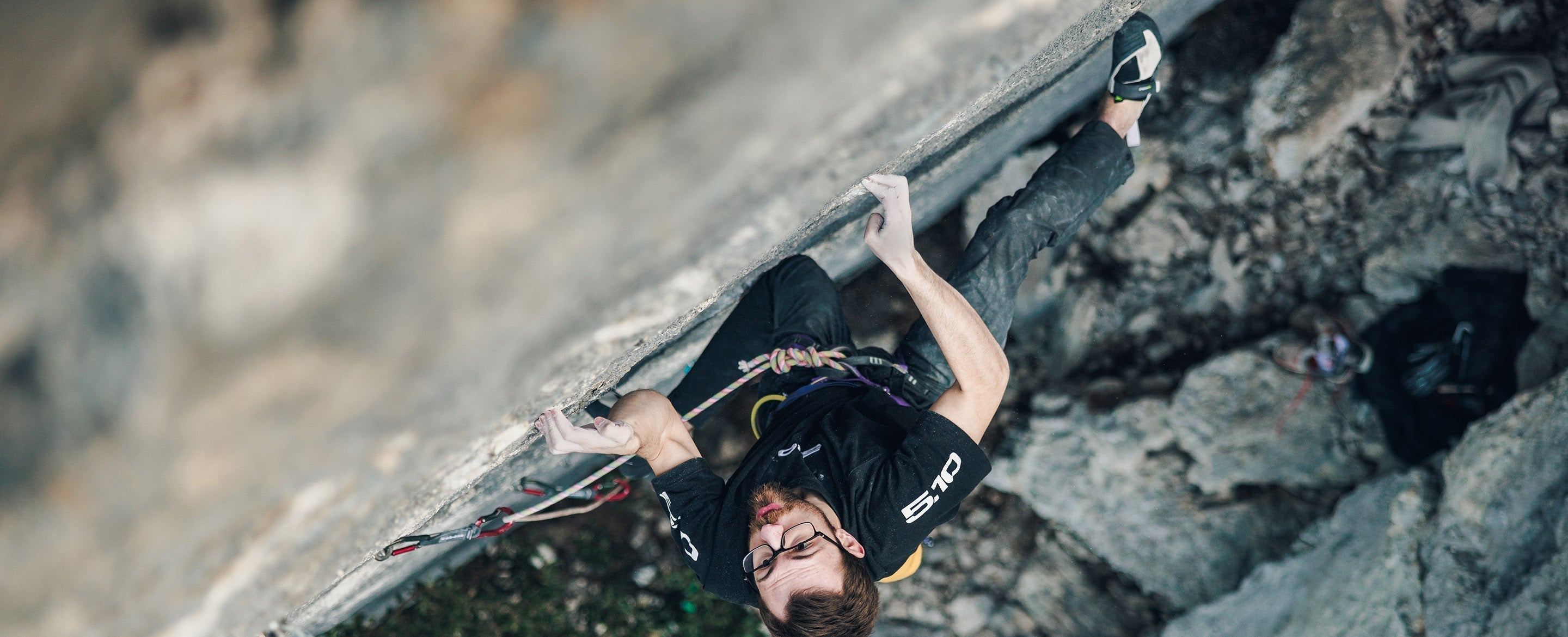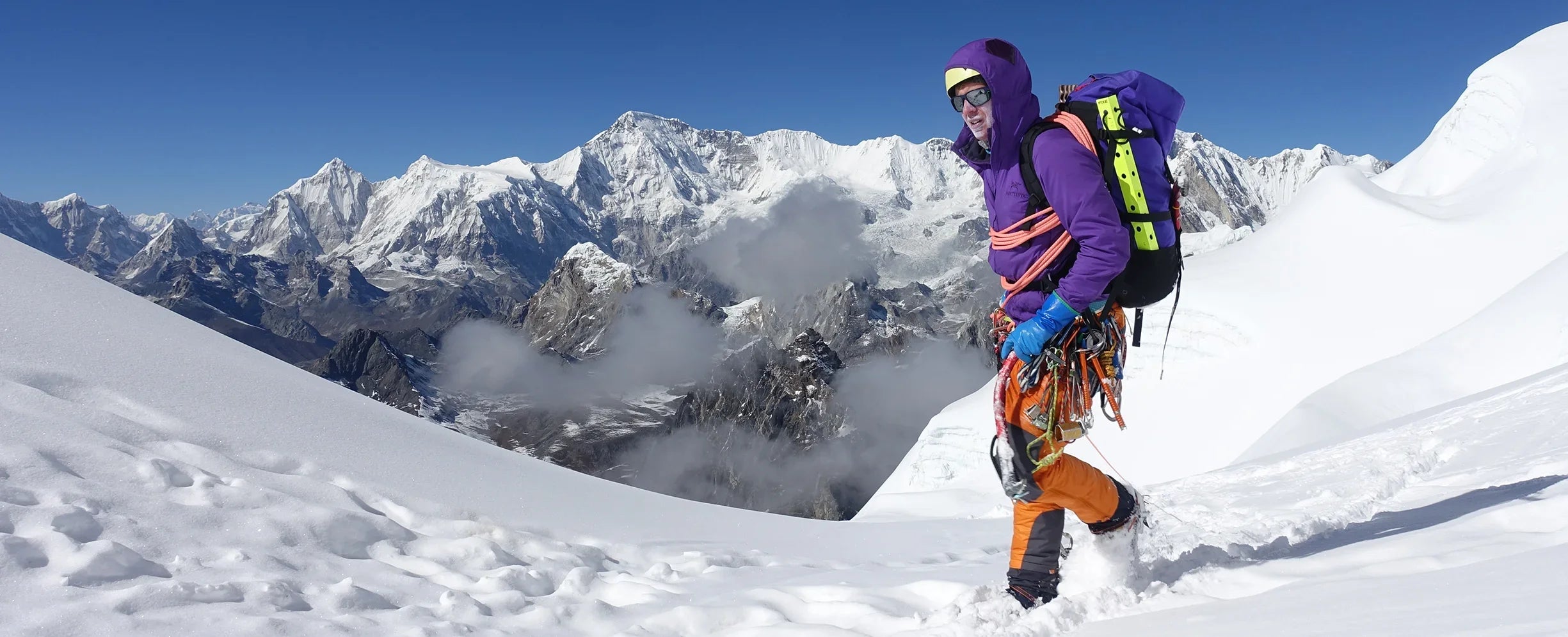Words from Tim Neill - IFMGA Mountain Guide
Carrying a Mountaineering Axe
In changeable mountain terrain

Pick facing forward or back?
It’s in the British mountaineering culture to always have the pick facing backwards. The idea being you are able to adopt an ice axe arrest position if you should fall. However, as the ground steepens, it becomes more practical to use the pick for efficient progression. When you meet a steep slope and are forced to zig zag or even front point/kick steps, it is often better to have the pick forwards so you can use the axe for a technique known as 'daggering'. Here, you hold the axe by it's head and use your weight to plunge the pick into the snow/ice as you ascend. The result is additional security and a lower chance of falling in the first place.
With modern (slightly) curved shaft mountaineering axes, forward facing carry also allows the spike to be used with more security and stability as it’s then forced to literally spike the ground. The adze also gives a more secure and stable grip of the axe.
In summary - when progressing up steeper terrain, consider switching your grip such that the pick/head of the axe is facing forwards. We're finding a balance between being able to self arrest if you fall, and climbing more securely such that a fall is avoided altogether.


Libby Peter, UIAGM Guide, adds:
"It's worth considering the point at which you decide to move your axe from being attached to your rucksack, to being in your hand. Avoid waiting until you reach the point at which you really should have the axe ready. Here you may already be positioned on a slope and feeling insecure. Read the terrain ahead, if there is any chance a slip could send you sliding down the slope, then pre-empt what's coming and get the ice axe in your hand."
What about in descent?
Experience shows that most slips and falls take place whilst descending snow and ice, and predominantly when a Mountaineer is facing outwards from the slope. The best technique is a steady and controlled pace. One must also be mindful of changing snow conditions and make best use of traction either from crampons or a good plunged foot step. Don’t be taken by surprise by a sudden change in the density or type of snow (firm to soft, crusty or even wet snow on top of a firm base). By constantly checking your pace and judging each step you’re a lot less likely to slip. This is absolutely important where there’s a steep run out below you, and only face out when you’re really confident.
The same rules apply as to whether the pick is forward or back but perhaps most of the time whilst facing out in descent the pick backwards is more practical. This is especially so with those curved shaft axes. It’s not uncommon to miss the slope with the spike (with a forward facing pick) and therefore glance the shaft of the axe off the snow instead of penetrating it with the spike.

Leash or no leash?
In ascent and descent of steeper ground it affords you better balance to hold your axe in the hand that’s nearest the slope (the uphill hand). An experienced Mountaineer will be able to swap from one hand to the other with no faff or change in pace as you turn each corner. This takes a little practice and also brings into play a long running debate...a leash or no leash. The leash offers a backup in case the axe is dropped. This can be a great advantage, however human nature means that any faff will likely be abandoned sooner or later. In this case swapping a leash from one hand to the other is likely to be ignored or worse, the leash will be left to dangle and therefore become a crampon trip hazard. If you’re really worried about dropping your axe you could try a stretchy tether to attach it to your harness or body. Unless you’re climbing technical terrain attach it to the head of the axe.
As you become more experienced you will probably forego a leash or tether altogether in all but the most technical terrain. The bottom line is to concentrate and not drop it!

In action - DMM Slide Lock Leash attached to a Spire Tech axe
In summary
Make desicions on the go. There is no one size fits all rule. Not only is slope angle constantly changing, the snow type and density fluctuates massively over even small areas. Get comfortable carrying the axe with both pick facing forwards and back, then make a considered judgement of the most practical orientation of your axe on the go.
Practice your footwork in crampons. Like all aspects of mountaineering and climbing good secure footwork and balance is the key to safe movement and the ice axe should always be seen as an aid to this rather than the absolute point of focus.
Don't rush. Taking the time to feel the snow beneath your footsteps. Listening to the snow react to your weight. Switching the axe from one hand to another carefully to avoid fumbling your grip on it. These are all important considerations and practices which become second nature over time.
Tim Neill is a qualified IFMGA guide, with extensive climbing experience throughout the British Isles. He has also made trips further afield to North America, Greenland, Patagonia, Peru, Australia, Morocco, and widely throughout mainland Europe.

Follow on Instagram @timneill71




